Varieties of building facade mesh and its installation
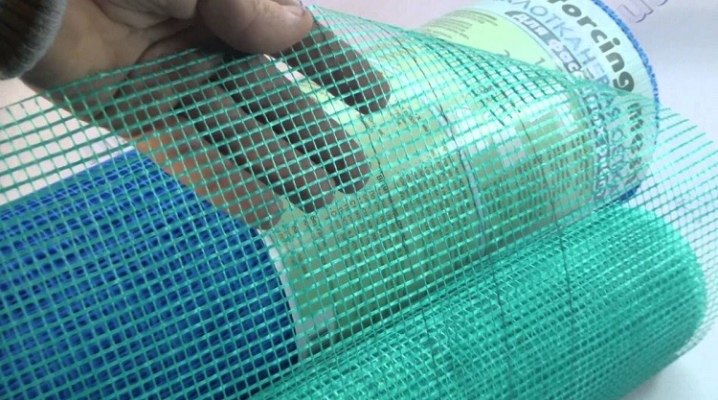
Facade mesh is a common building material with excellent performance properties. From the material in this article, you will learn what it is, what it is, how it is classified. In addition, we will tell you what to look for when choosing and installing it.
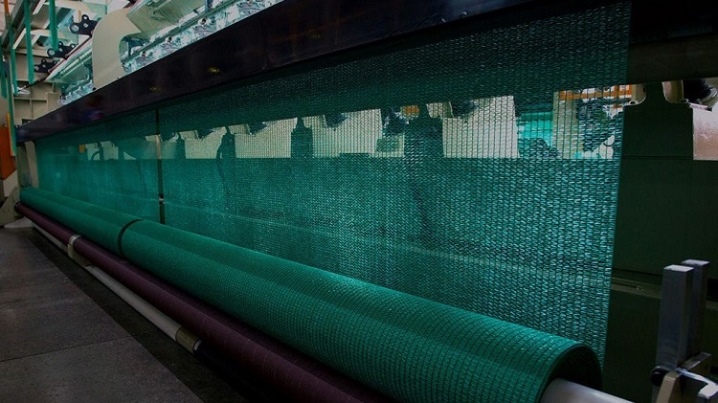
What is it and what is it for?
Building facade mesh - a woven yarn fabric with loops for fastening along the edges or in the center... In structure, it looks like a soft mesh network. This is a durable material, it is used to seal mortars that are applied to wall ceilings. Thanks to it, the aesthetic performance of buildings is improved, the facades are strengthened. Depending on the type, the facade mesh can be treated with different compositions. This improves its performance. Thanks to such treatments, it is not afraid of alkalis and chemicals contained in raw materials for finishing.
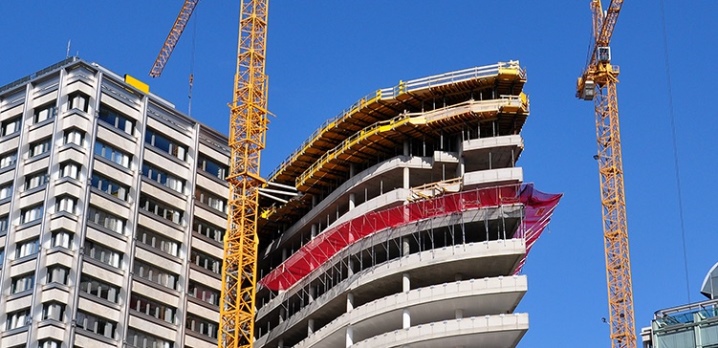
The type of material varies, as well as the scope of use. The material has a protective, sealing, strengthening function in relation to finishing solutions. It is used for horticultural purposes by reducing the amount of sunlight falling on plants. It protects construction sites from ultraviolet radiation (shading function). A protective facade mesh is needed to prevent materials, tools and debris from falling from a height. It is used for scaffolding, protecting them from various weather conditions (as a shield from moisture, wind and rot).
It is the boundary between the construction site and the environment, a screen that protects the builders while ensuring the safety of the workers.

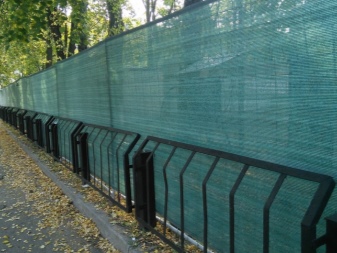
It can be called a framework for working solutions, preventing cracking of coatings during operation. It improves the adhesion of the base to the mortar, is suitable for working with loose surfaces (for example, gas, foam concrete), and compensates for the properties of the cladding. Can be used for plinths, resistant to tensile forces. Its cellular structure promotes air circulation, does not accumulate moisture. The material with the minimum mesh size is used for environmental protection, as it can retain construction dust. In addition, construction mesh is used to decorate facades. Greenhouses are covered with it, the base for ceramic tiles, waterproofing materials are strengthened.
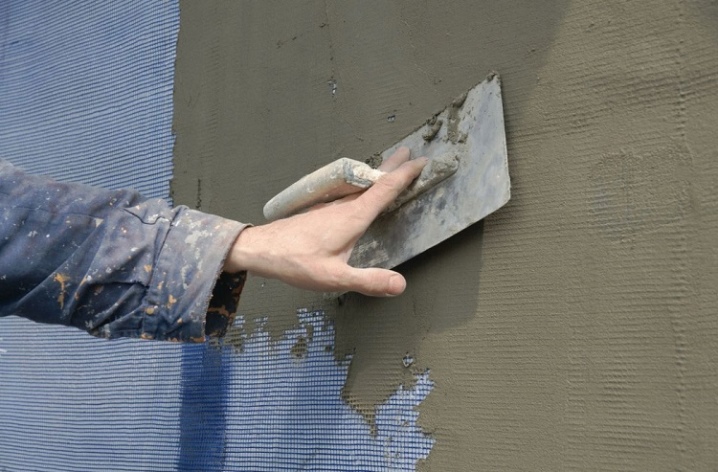
A camouflage net is a functional decorative cover for buildings being repaired. With its help, the reconstructed structures are given an optimal and tidy look. It is used to cover agricultural plantings, fencing sports grounds. The material is versatile, does not rot, helps to reduce the risk of injury on objects, improve their appearance. It is environmentally friendly, flexible, compact, easy to install. Depending on the variety, it can have a different type of weaving. Building facade mesh is sold in rolls of different lengths and widths.

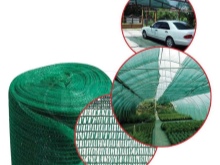
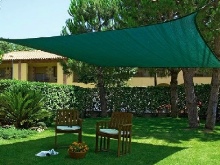
Species overview
The building facade mesh differs in the thickness of the threads, the size of the cells, and the material of manufacture. Each type of material has its own characteristics.

By material
The material for making the mesh is different. This determines the scope of use of the building material and its choice. The thickness of the plaster layer, the type of the main component of the working mixture, and the peculiarities of the effect of weather conditions depend on it. Metal facade meshes are a justified solution for strengthening facade surfaces in cases where it is planned to veneer the bases with a layer of more than 30 mm. They perfectly hold coatings of great weight, preventing them from cracking during operation. The disadvantage of metal meshes is the creation of "cold bridges", which is not the case with analogues made of synthetic materials.
Depending on the type of material of manufacture, they can have a zinc coating. Such building materials are resistant to rust and decay. Alkali-resistant facade mesh is used as a reinforcing layer under a durable plaster coating. In its production, the method of broaching and conventional welding is used.
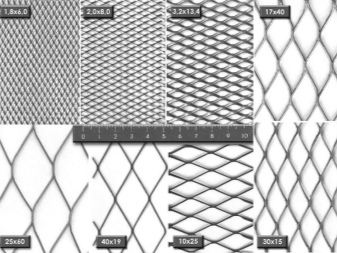
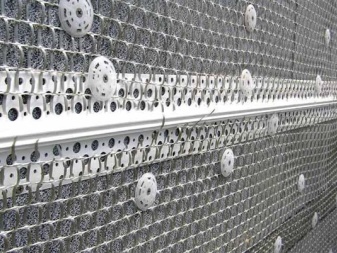
In addition to the metal one, there is a plastic version of polyvinyl chloride on sale. It is produced by the knot weaving method, due to which spontaneous unweaving of cells in case of damage is excluded. This material is in demand among buyers due to its excellent performance characteristics. It improves the strength of the cladding and is at an affordable price. However, plastic varieties have several disadvantages.... They are unstable to an alkaline environment, therefore, over time, they can deteriorate from the plasters themselves. In addition, they are not suitable for working with thick veneers, as they do not support the heavy weight of the mortars used.
The plastic mesh is not resistant to high temperatures. In addition to metal and plastic, the facade mesh is composite. The fiberglass variety is good because it is suitable for cladding different types of bases. It interacts with any solution and is inert to alkalis and chemicals.
Differs in durability, high strength, resistance to deformation, thermal expansion, combustion.
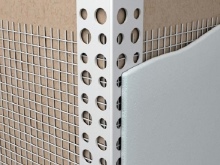
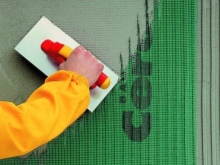

By protective layer
The protective coatings for facade meshes can be different. Depending on this, they make the canvases resistant to moisture, decay, rust, temperature extremes, stress, and chemicals. In addition to the material of manufacture, the decorative indicators of the facade mesh may differ. There are products of different shades on sale, and the color of the nets can be uniform and uneven. The buyer has the opportunity to purchase products in green, dark green, blue, black, brown and even orange.
In this case, the coating can be not only one-color. Optionally, you can order a product with a picture and even any print. Thus, decorative varieties can decorate the interior and the surrounding space, without knocking out against the general background.
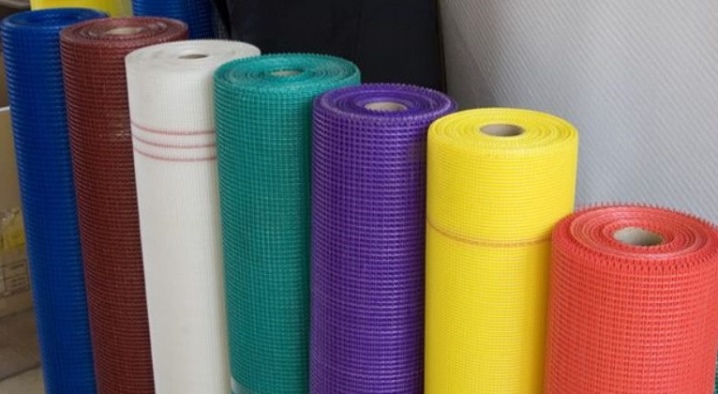
By cell size
The standard parameters of the cells of the building facade mesh are 10x10 and 15x15 mm. Moreover, their shape, based on the type of weaving, can be not only square or diamond-shaped, but also triangular. It does not affect the strength characteristics of the mesh. However, the larger the mesh size, the higher the throughput of the panels.
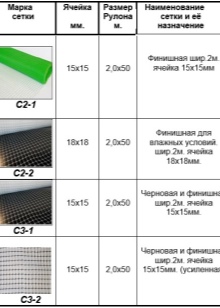
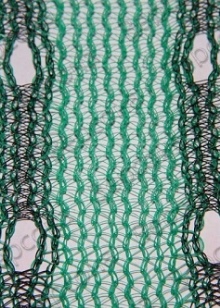
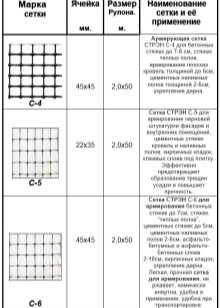
Nuances of choice
The range of building facade meshes supplied to the domestic market is diverse. When choosing a specific option for your needs, you need to pay attention to a number of criteria and characteristics. An important factor is the quality of the weaving. It is not difficult to check it: it is enough to bend a small section of the mesh along one of the threads. If the weave does not match the cells, the material is of poor quality. If the geometry and the coincidence of the cells are not broken, the material is worth buying. The structure of the cells must be uniform and even.
A high-quality fiberglass mesh returns to its original shape after being clenched into a fist. When choosing a reinforcing synthetic and fiberglass type, tensile strength and alkali resistance must be taken into account. The breaking load of the product selected for plastering flat flat areas should be at least 1800 N. To work with decorative facade elements, it is worth choosing options with indicators from 1300 to 1500 N.
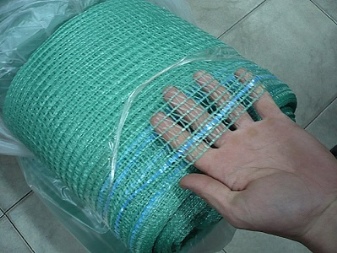

High-quality facade mesh has regulatory documentation. Information on compliance with GOST standards is indicated on the roll label... In addition, the seller, upon request, must provide the buyer with a certificate confirming the quality of the selected product. If the required documentation is not available, the quality of the material is questioned. There are cases when unscrupulous manufacturers indicate density on the label that does not correspond to the actual one. To check the actual data, the roll is weighed and then the resulting weight is divided by the area. In addition, it is worth considering: the thinner the threads, the stronger the net.
Density parameters are divided into 4 categories. The cheapest and worst of all is mesh with a density of 35-55 g per m2. It cannot be used more than 2 times due to its low strength. Variants with dimensions 25-30 g m2 are suitable for use on light supports. To mask external walls that violate the appearance of the walls of the surrounding architecture, a material with a density of 60-72 (80) g / m2 is used.
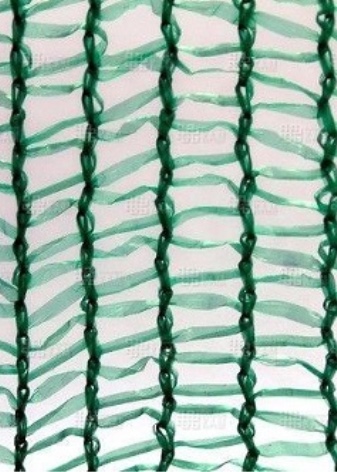

Mesh with parameters 72-100 g / sq. m can be used as a temporary shelter. A dense variety is needed to cover scaffolding. Its minimum value should be 72 g / m2. The maximum density mesh has parameters of about 270 g / sq. m. It can be used as screens and sun canopies. If desired, you can find options with a width of up to 3 meters, capable of stretching in any direction up to 20%.
Product specifications (including width, mesh size, density and tensile strength) may vary from manufacturer to manufacturer. For example, the characteristics of a high-quality domestic mesh look like this:
- vertical tensile strength is 1450 g / m;
- horizontal tensile strength is 400 g / m;
- the density on the basis of 0.1 m is 9.5 stitches;
- 0.1 m weft density is 24 stitches;
- shading rate varies between 35-40%.
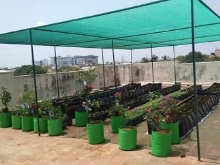

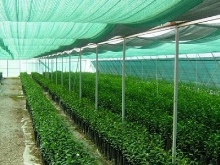
Some options have an additional edging, reinforcing the mesh fabric, protecting the mesh from unraveling... Security options can have patterns. Moreover, depending on their type, the drawing can persist for quite a long time. Some modifications of this type are even used to install advertisements.
The nets of different manufacturers differ in the field of application. For example, green varieties for forests are bought for use on construction sites (for one-time use).
Options for temporary enclosures and greenhouses have different densities. In these cases, materials with good air permeability are bought. The size of the cells depends on the preference of the buyer.

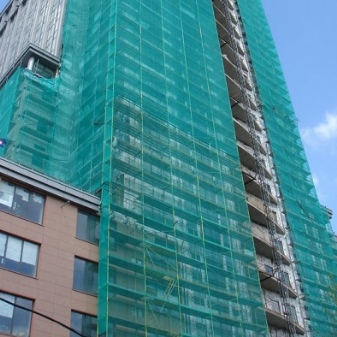
Installation features
The fastening technology of the mounting mesh depends on the type and scope of its application. Based on this, it can be attached to the surface of the base with a stapler, nails, screws, dowels. The panel is fastened together by means of clamps. Immediately before fastening, it is pulled in such a way that it fits to the base as tightly as possible, without swelling and bubbles. It is fixed with an overlap from top to bottom. In order to reinforce and strengthen the inner and outer corners, plastic corners with a mesh are used. With their help, you can make perfectly even corners, preventing cracks.
Metal facade meshes differ in the fixing algorithm. They can be laid in vertical and horizontal stripes. This does not affect the strength of the installation.
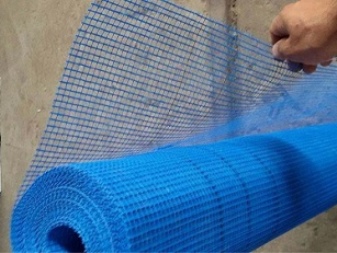
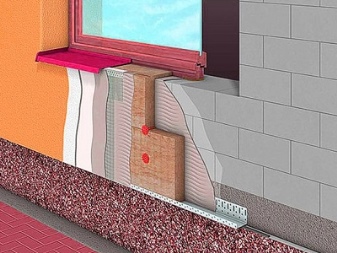
Installation technology consists of a number of sequential steps.
- The parameters of the wall are measured, a metal mesh is cut along them using metal scissors.
- They start fixing using dowels (relevant for concrete or brick floors). If the mesh is attached to the foam block, nails 8-9 cm long will do.
- An electric drill with a perforator makes holes for the mesh, creating them in a single line with a step of 50 cm.
- A mesh is hung on each dowel, pulling it to avoid unevenness.
- Check the position of the opposite (unsecured) edge.In case of distortions, the grid is outweighed by adjacent cells.
- They begin to fix the second side, make holes in a checkerboard pattern.
- In places where the strips overlap, the dowels are installed at a distance of 10 cm from the edge. Both strips of the reinforcing mesh are hung on them.
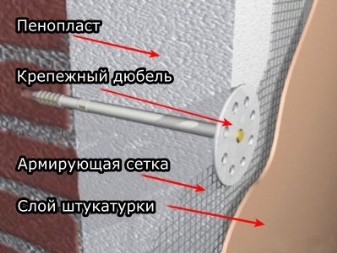
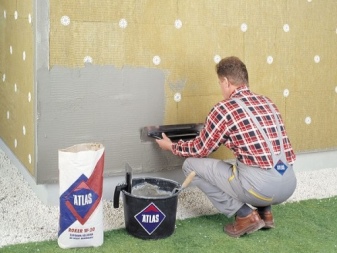
At the locations of windows and doors, the mesh is cut to size or bent. If it is simply folded back, then make sure that the edges of the folded sections do not protrude beyond the edge of the facing layer. When installing a metal mesh, the solution is thrown in several stages. The initial consistency should be thicker than the final leveling consistency.
Plastic nets are attached differently. Reinforcing varieties with a pattern for plaster are planted on glue. Moreover, depending on the type of work, sometimes it is not necessary to reinforce the entire base area. It is enough to do this in a vulnerable area using any brand of glue. The main requirement for the adhesive composition is high adhesion to plastic materials.
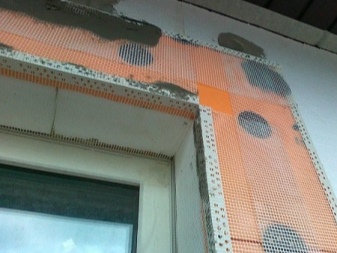
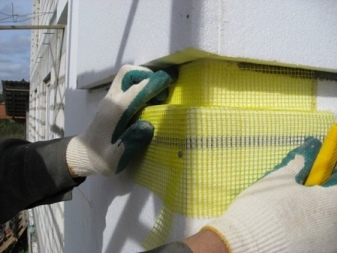
The fixation technology will be as follows:
- perform a visual inspection of the surface;
- get rid of existing dowels, slots;
- at the height of the reinforcing layer, draw a horizontal line that limits the height of the glue application;
- prepare glue according to the manufacturer's recommendation;
- glue is applied to the wall with a spatula up to 70 cm wide;
- spread the glue evenly over a small area (2-3 mm thick);
- glue the mesh from one edge, leveling it horizontally, avoiding distortions;
- the mesh is pressed to the base in several places;
- press the mesh with a spatula, smear excess glue over the free surface;
- the glued mesh is left to dry completely.
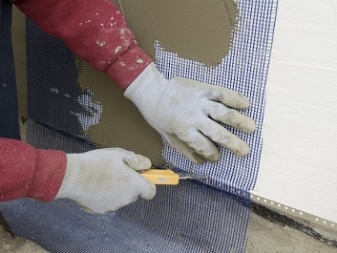
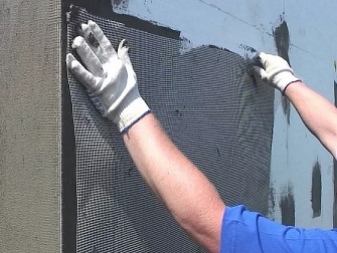













The comment was sent successfully.